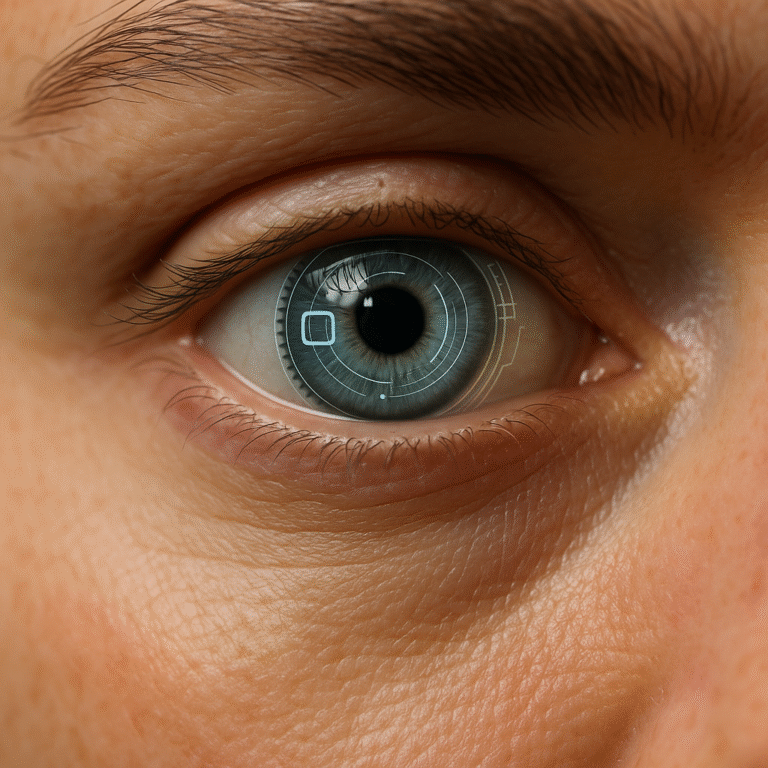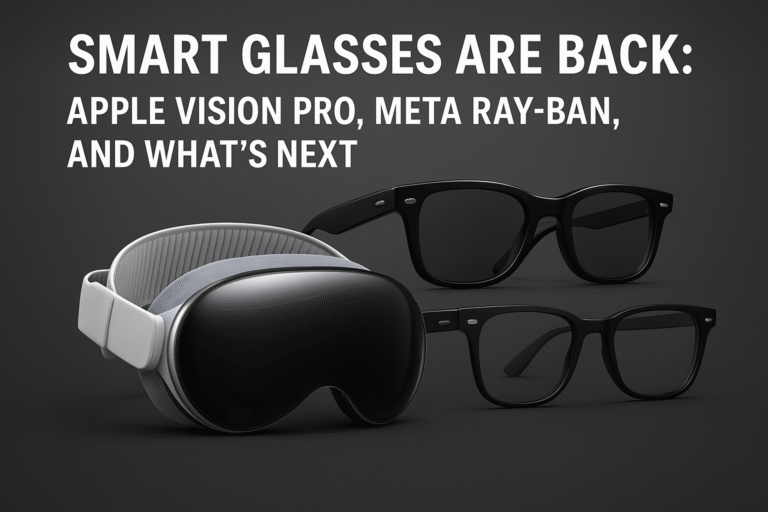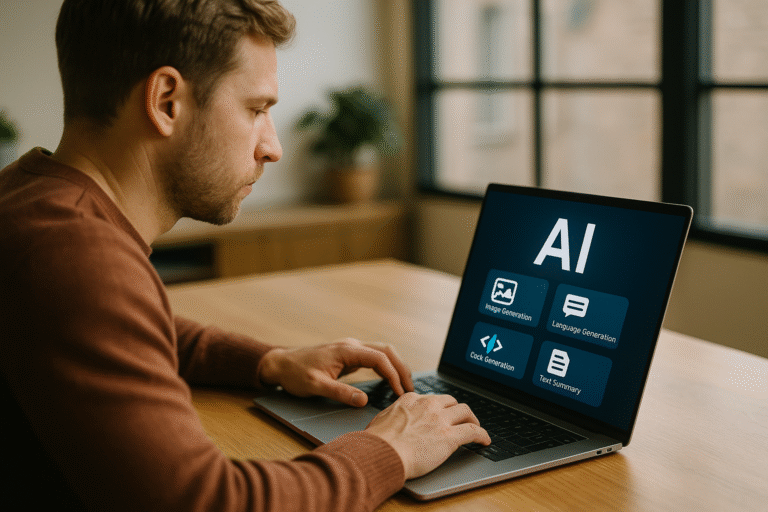- 1 Table of Contents
- 2 Why IoT Is More Than Just Smart Gadgets and Why It Matters More Than Ever
- 3 What Is the Internet of Things (IoT)?
- 4 How Does IoT Work?
- 5 Top 5 IoT Devices That Are Changing the Game
- 6 Top 5 Internet of Things Devices
- 7 The Benefits of IoT: Efficiency, Savings, and Control
- 8 Challenges of IoT: Privacy, Security, and Standardization
- 9 IoT Across Industries: Real-World Applications
- 10 What to Expect Next: The Future of IoT
- 11 FAQs About Internet of Things (IoT)
- 12 Final Take: Why You Should Care About IoT
Table of Contents
Why IoT Is More Than Just Smart Gadgets
What Is the Internet of Things (IoT)?
How Does IoT Work?
Top 5 IoT Devices That Are Changing the Game
- Smart Home Hubs (Amazon Echo, Google Nest)
- Smart Thermostats (e.g., Ecobee, Nest)
- Wearable Health Trackers (Fitbit, Apple Watch)
- Smart Appliances (Samsung Smart Fridge, LG ThinQ)
Industrial IoT Sensors
Comparison Table: Best IoT Devices for Daily Use
The Benefits of IoT: Efficiency, Savings, and Control
Challenges of IoT: Privacy, Security, and Standardization
IoT Across Industries: Real-World Applications
Healthcare
Agriculture
Smart Cities
Logistics & Supply Chain
What to Expect Next: The Future of IoT
FAQs About IoT
Why IoT Is More Than Just Smart Gadgets and Why It Matters More Than Ever
The Internet of Things (IoT) is often dismissed as a futuristic concept or limited to smartwatches and voice-controlled speakers. But the reality is far more impactful—and far-reaching. The Internet of Things (IoT) represents a global network of connected devices that constantly gather, process and react to data. This connectivity enables automation, personalization, and predictive technology in ways we’ve never experienced before. From smart homes to intelligent supply chains, IoT is the invisible thread weaving together the digital and physical worlds.
What makes the Internet of Things (IoT) revolutionary is not the gadgets themselves, but what they enable. It’s the ability to monitor a patient’s heart rate remotely, to reduce food waste by tracking refrigeration in real-time, or to alert a factory manager before a machine fails. The true power of IoT lies in its capacity to transform industries, improve human decision-making, and unlock efficiencies that were previously unimaginable. This isn’t just about convenience—it’s about reshaping the future of how we live, work, and connect.
What Is the Internet of Things (IoT)?
The Internet of Things (IoT) is a vast ecosystem of interconnected physical objects—commonly referred to as “smart devices”—that are equipped with sensors, processors, and connectivity features. These devices can collect and transmit data to other devices or centralized systems via the Internet. The goal isn’t just to automate tasks but to generate valuable insights and enable real-time decision-making. From household appliances to medical wearables and autonomous vehicles, IoT has already begun transforming our interaction with technology.
What separates IoT from traditional connected devices is its autonomy and integration. Unlike manual systems, IoT-enabled devices can analyze incoming data, learn from it using AI or machine learning algorithms, and act without human intervention. For example, a smart irrigation system can monitor soil moisture levels and weather forecasts to determine exactly when and how much water a crop needs improving resource efficiency and crop yields simultaneously. In short, IoT merges physical objects with digital intelligence, resulting in smarter environments.

How Does IoT Work?
At its core, an IoT system functions through a chain of interactions: sensing, connectivity, data processing, and response. Devices first detect or monitor changes in their environment—such as temperature, movement, or health data—using built-in sensors. These signals are then transmitted, usually via Wi-Fi, cellular networks, or low-energy protocols like Zigbee or LoRaWAN, to a central server or cloud platform. There, the data is processed and analyzed, either for immediate action or long-term insights.
One of the game-changers in IoT is the integration of AI and edge computing. With edge computing, data is processed closer to the source—on the device itself or nearby edge servers—rather than waiting for it to reach the cloud. This reduces latency, conserves bandwidth, and enables faster response times. In critical systems like autonomous vehicles or industrial robots, this speed and reliability are essential. By combining real-time data with intelligent analysis, IoT can make automated decisions that are both precise and timely.
Top 5 IoT Devices That Are Changing the Game
IoT devices come in many forms, but what they share is the ability to enhance everyday life through smart automation and real-time feedback. From smart thermostats that learn your behaviour to wearable health trackers that detect abnormalities before you feel them, these tools are no longer just “nice-to-haves”—they are becoming essential components of our personal and professional ecosystems. These devices are designed not only to serve their core function but also to learn, adapt, and communicate with other devices for a seamless user experience.
What’s especially powerful about these devices is how integrated and scalable they’ve become. A smart home hub can now control not just lights and music, but also locks, cameras, thermostats, and even your robot vacuum. Industrial sensors in factories can communicate with supply chain software to automate inventory. The line between convenience and necessity is blurring as these devices start to optimize resources, improve safety, and increase productivity across every sector. Whether you’re a casual user or a tech-savvy entrepreneur, the impact is undeniable.
Top 5 Internet of Things Devices
Let’s look at the top IoT devices making a massive impact. Each one includes a link and visual placement suggestion:
1. Smart Home Hubs
Examples: Amazon Echo, Google Nest Hub
These devices act as command centers for your home. With simple voice commands, you can control lights, music, and even security systems.

2. Smart Thermostats
Examples: Nest Learning Thermostat, Ecobee
They learn your routines and adjust heating or cooling to save energy.

3. Wearable Health Trackers
Examples: Fitbit Charge, Apple Watch Series
Track your heart rate, sleep, and activity levels—great for fitness and health monitoring.

4. Smart Appliances
Examples: Samsung Family Hub fridge, LG ThinQ oven
Manage groceries, watch TV, or control oven temps from your phone.


5. Industrial IoT Sensors
Applications: Factories, warehouses, logistics
They monitor equipment, detect faults, and prevent downtime.

The Benefits of IoT: Efficiency, Savings, and Control
The true strength of IoT lies in its ability to simplify complex tasks and maximize efficiency. In smart homes, you can automate climate control, lighting, and security—saving both time and energy. In businesses, IoT streamlines operations by reducing waste, monitoring supply chains, and enabling predictive maintenance on machinery. By collecting and analyzing data continuously, IoT systems help identify inefficiencies that humans may overlook, offering tailored solutions based on actual usage patterns.
Moreover, IoT gives users unprecedented control over their environments. You can monitor your home from miles away, check real-time stats on your energy usage, or get alerts when something unusual happens—all from your smartphone. On a larger scale, cities use IoT to manage traffic flow, reduce pollution, and improve emergency response systems. These advances result not just in cost savings, but in better quality of life, safer communities, and more sustainable living.
Challenges of IoT: Privacy, Security, and Standardization
While the benefits of IoT are immense, they come with serious risks and responsibilities. One of the primary concerns is data security. Each connected device becomes a potential entry point for cyberattacks, and with billions of devices worldwide, the scale of vulnerability is staggering. Default passwords, weak encryption, and unpatched firmware make some devices particularly easy targets. As these devices often handle sensitive personal or business data, any breach could lead to devastating consequences.
In addition to security, data privacy and regulation are major concerns. Who owns the data your devices collect? How is it used, shared, or sold? Many consumers don’t realize that some IoT manufacturers monetize usage data, often without explicit consent. Furthermore, the lack of standardized communication protocols means that devices from different brands may not work together efficiently, creating fragmented ecosystems. As IoT continues to expand, solving these challenges will be crucial for long-term adoption and trust.
IoT Across Industries: Real-World Applications
The power of IoT goes far beyond consumer gadgets—it’s transforming entire industries. In healthcare, for example, IoT enables remote patient monitoring, smart insulin pens, and AI-assisted diagnostics, which not only improve outcomes but also reduce hospital visits and operational costs. In agriculture, connected sensors monitor soil quality, weather patterns, and livestock health, allowing farmers to use resources more efficiently while increasing crop yields. These solutions are critical for feeding a growing global population with fewer environmental impacts.
In urban development, IoT is the backbone of smart cities—helping manage traffic lights, reduce energy consumption, and optimize public services like waste collection or public safety. The logistics sector uses IoT for fleet tracking, real-time inventory management, and predictive maintenance, making delivery systems faster and more reliable. Even the energy industry is benefiting through smart grids and meters that optimize electricity distribution. The result? Industries that are leaner, greener, and smarter—and those who fail to adapt risk falling behind.
What to Expect Next: The Future of IoT
As technology evolves, so does the potential of IoT. One of the most significant advancements on the horizon is edge computing, which allows data to be processed on the device itself rather than in a distant cloud server. This reduces latency, lowers bandwidth needs, and makes real-time decision-making possible in critical environments like autonomous vehicles or remote surgeries. Combined with AI and machine learning, IoT devices will become even more predictive and autonomous, learning from experience to fine-tune their operations without human intervention.
The rollout of 5G networks will further enhance IoT by delivering faster, more stable connections to more devices, enabling ultra-reliable communication for everything from wearable tech to factory robotics. Meanwhile, innovations like blockchain technology promise better data security and transparency, especially in sectors like finance and healthcare. Looking ahead, we’ll likely see the rise of self-organizing systems—where IoT devices dynamically communicate, learn, and optimize as a collective. The Internet of Things is not just evolving—it’s maturing into an intelligent ecosystem.
FAQs About Internet of Things (IoT)
❓ What are examples of IoT in everyday life?
Everyday IoT devices include smart speakers (like Alexa or Google Assistant), connected doorbells (like Ring), and robot vacuums. These devices use sensors and connectivity to automate daily tasks and improve convenience. Even connected cars, smart plugs, and baby monitors fall under this category.
❓ Is IoT safe?
It can be, but it depends on the manufacturer, user behaviour, and network security. Always choose trusted brands, regularly update firmware, and use strong Wi-Fi passwords. IoT security is improving, but user awareness and basic protection steps remain essential.
❓ Do I need internet all the time?
Yes—most IoT devices require a continuous internet connection to function correctly, especially for real-time data exchange. Some devices use low-energy connections like Zigbee or Bluetooth for localized control, but cloud sync and updates still rely on the internet.
❓ How do businesses use IoT?
Businesses leverage IoT to automate manufacturing, monitor supply chains, reduce energy usage, and even personalize customer experiences. For example, retailers use in-store sensors to track customer movement and adjust store layouts, while factories use predictive maintenance to avoid costly downtime.
❓ Will IoT replace jobs?
While IoT may automate certain manual tasks, it also creates new jobs in cybersecurity, data science, device maintenance, and AI integration. It’s more of a job shift than a full replacement—requiring upskilling in digital and technical fields.
Final Take: Why You Should Care About IoT
The Internet of Things is no longer a futuristic concept—it’s a present-day force revolutionizing how we live, work, and interact with technology. Whether you’re adjusting your thermostat from your phone or tracking critical health data in real-time, IoT makes life more connected, efficient, and responsive. For businesses, it’s the gateway to smarter operations, enhanced customer experiences, and reduced operational costs.
Ignoring IoT means missing out on an opportunity to stay ahead of the curve. By understanding and embracing this technology today, you’re not only improving your quality of life—you’re also preparing for a future where everything is intelligently connected. Whether you’re a tech enthusiast, a startup founder, or a cautious observer, now is the time to explore how IoT can benefit you—and how you can be part of the revolution.




